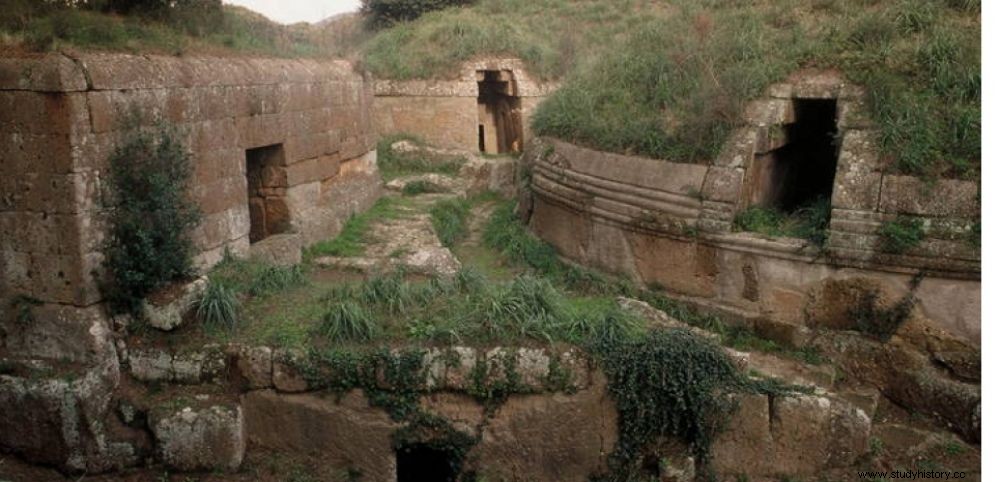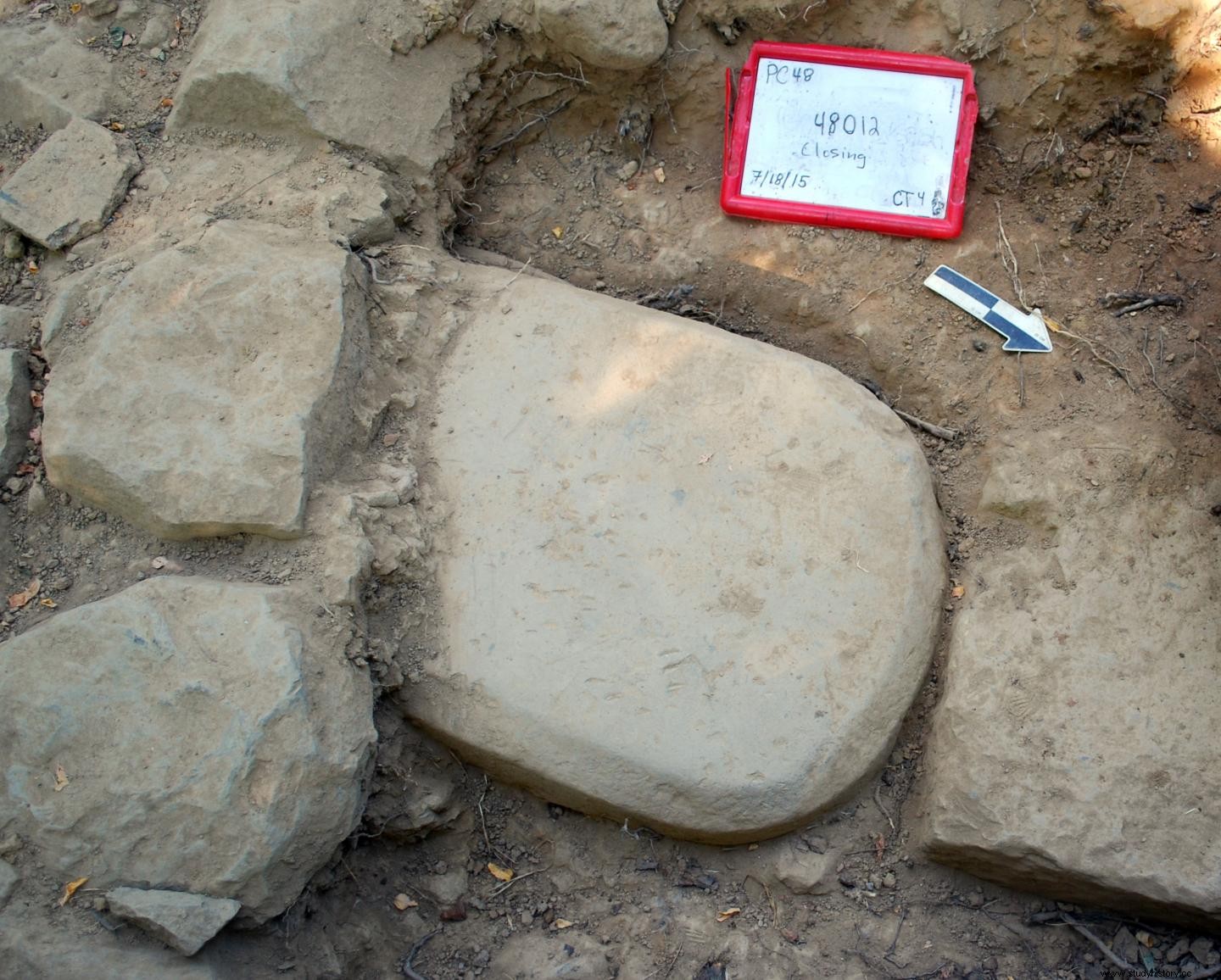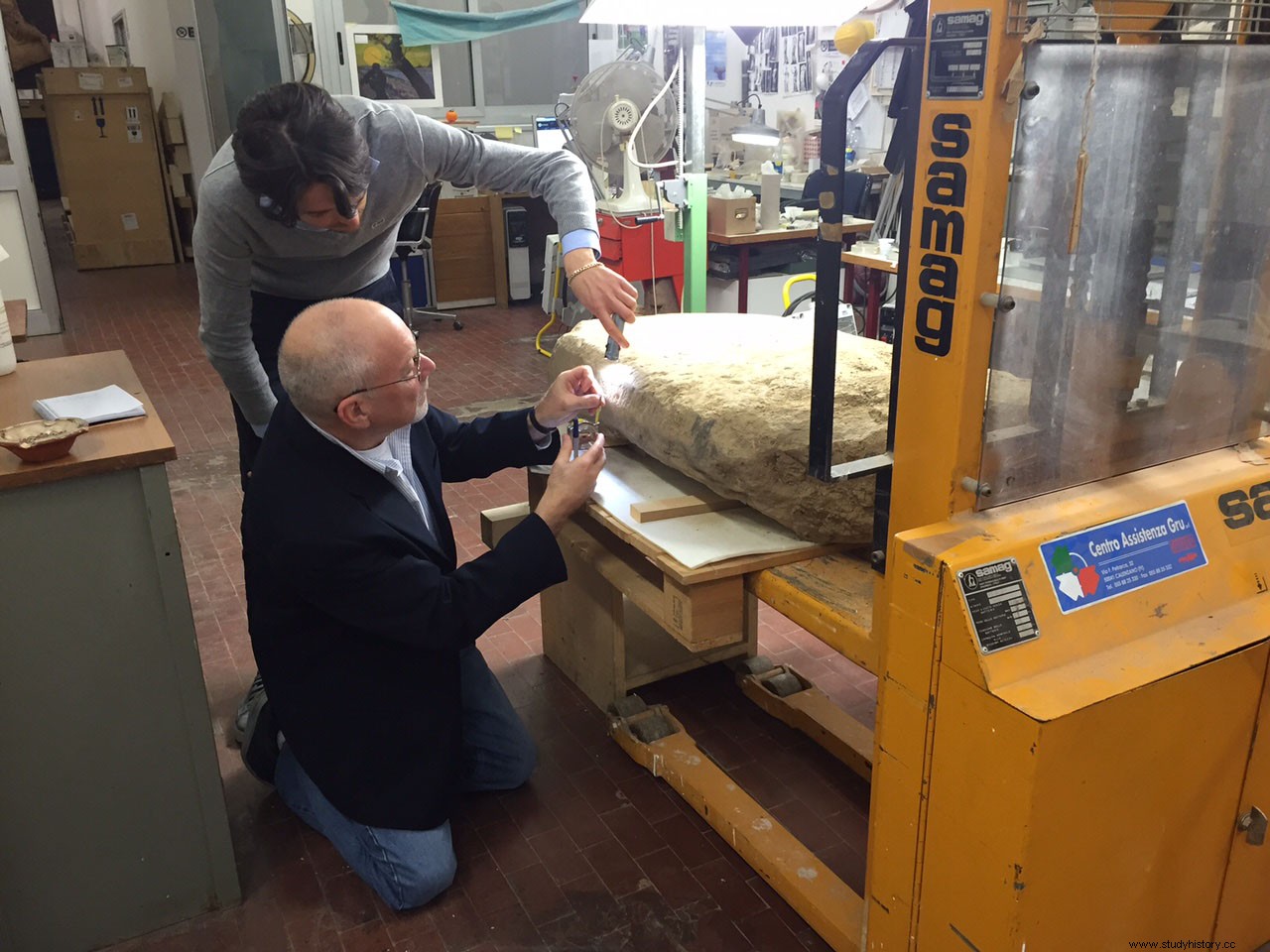 Etruscan Necropolis of Banditaccia (9th-3rd century BC), Cerveteri, Lazio, Italy .
Etruscan Necropolis of Banditaccia (9th-3rd century BC), Cerveteri, Lazio, Italy . ANTIQUE. “This is a unique find !” Gregory Warden, one of the co-directors of the Mugello Valley Archaeological Project, does not hide his enthusiasm. The archaeologist emeritus of the Southern Methodist University in Dallas (United States) has indeed just unearthed an exceptional Etruscan stele dated from the VI e century BC at the site of Poggio Colla, northeast of Florence, in Tuscany (Italy). This sandstone slab, more than a meter long, has an engraved text of more than 70 Etruscan characters, the language used in antiquity by the inhabitants of Tuscany, in the north of the peninsula. Found in the foundations of a monumental temple where it had been buried for 2,500 years, these precious lines engraved in stone could even constitute a real treasure since it could be a religious writing. A mine for the specialists of this lost language, rather accustomed to short funerary formulas mainly from the necropolises!

2,500-year-old Etruscan stele, engraved with 79-character text, found buried in the foundations of a sanctuary at the site of Poggio Colla, Tuscany. © Mugello Valley Archaeological Project.
The Etruscans, who had been writing since the VII th century before our era, had adopted a modified Greek alphabet, used by their neighbors in the colonies of Cumae and the island of Ischia, in southern Italy. Being able to read Greek, most contemporary epigraphers are able to understand the brief dedications identified so far:“Such an object is the property of so and so. .”, “I belong to …", etc. However, specialists do not have the overall knowledge of this language and do not have all the vocabulary or grammar. “Thanks to this stele, we hope to make inroads into the Etruscan language , adds Gregory Warden. Perhaps this long inscription will contain new words.” Archaeologists especially expect that the text will reveal the name of the Etruscan god or deity venerated in the sanctuary, something to advance their knowledge of the spiritual practices of this people.

The Etruscan stele from Poggio Colla brought back to the laboratories of the Archaeological Superintendence of Tuscany, in Florence (Italy). © Mugello Valley Archaeological Project
Inscriptions found on permanent materials are not frequent concerning the Etruscans. Among the most famous are the Pyrgi tablets, gold plates with a quotation in Punic and Etruscan. The Etruscans mainly used perishable supports such as wax tablets or linen cloth books which they folded like sheets. These works on fabric, whose real meaning has only recently been understood by researchers, are represented on certain sarcophagi. For the time being, the remarkable stele of Poggio Colla will be fully documented and restored in the laboratories of the Archaeological Superintendency of Tuscany, in Florence. Several months will be necessary for the translation of the engraved text.
One of the most brilliant civilizations of antiquity
People long described as mysterious, the Etruscans built in Italy, well before the Romans, one of the most brilliant and refined civilizations of all Antiquity. Appeared around the IX
th
century before our era, they dominated half of the peninsula for nearly five centuries. Defeated by Rome in the IV
th
century before our era, they gradually assimilated into its civilization and became citizens of the Empire in 90 CE. It is thanks to the many richly decorated tombs found at Cerveteri or Tarquinia in Etruria — a region between the Arno and the Tiber, which today corresponds to half of Tuscany — that we have come to know them.
